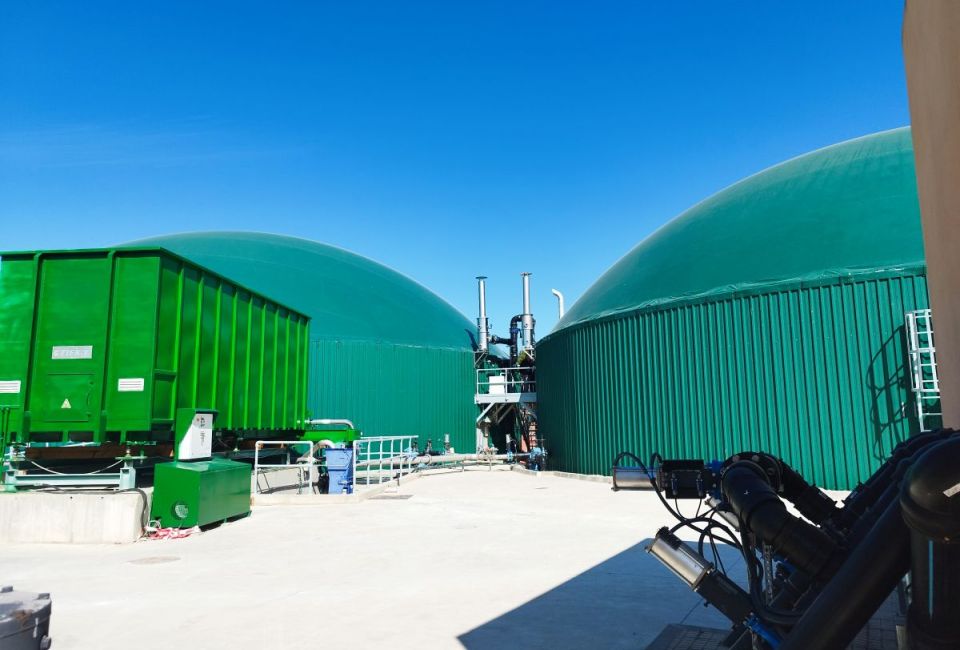
The rise of biogas opens up the possibility of a new centralised plant model for the management and recovery of livestock manure in Osona
The Catalonia Biogas Plan for 2023-2030, which was presented a few days ago at the BIT Congress in Vic, aims to triple the number of biogas plants in Catalonia in seven years in order to significantly increase the production of this renewable energy source. In regions like Osona, where livestock farming and meat production are important activities, centralised biogas plants are emerging as one of the most viable collective strategies for the treatment, management and recovery of the large surplus of livestock manure and organic waste created there. Estimates suggest that in Osona, only 50% of livestock manure can be applied to fields of crops as organic fertiliser, which is why it is necessary to find other methods for its management, treatment and recovery where possible.
Osona currently has two impact reduction plants that handle a significant volume of slurry, while applying electrical and thermal cogeneration by the combustion of natural gas at the same time. Nevertheless, the economic viability of these plants is subject to grants from the Catalan Government related to the management of slurry and thermal and electrical cogeneration. However, there is strong reason to believe that these plants will stop receiving grants in the coming years, and will probably close as a result. In view of this situation, various experts at the BETA Technological Center at the University of Vic – Central University of Catalonia (UVic-UCC), working with Xavier Flotats, professor emeritus of the UPC, and supported by the Osona Regional Council and Creacció have been working on the theoretical definition of a new model for a centralised biogas plant for the management of slurry and other organic waste that is suitable for the situation in Osona.
A technical seminar on 18 April
This plant model, which is designed to solve this region's specific needs, will be presented at a technical seminar that will take place in partnership with the Catalonia Bioenergy Cluster in the Segimon Serrallonga Hall in the Masia Torre dels Frares building at UVic-UCC, at 10 am on Tuesday 18 April.
At the seminar, the group of experts who have worked on the proposal will present the outline of the project, which could provide the basis for the specifications of its real phases of implementation. The event will include the participation of several companies promoting similar plants in other regions, which will be discussing their experiences. Apart from presenting the results of the work that has been done so far, this seminar aims to reach as many stakeholders in the biogas value chain as possible (promoting companies, livestock farmers, investors, marketers, distributors, consumers, etc.) and political representatives in the region.
Aspects of the future pla
The group of experts has been compiling data and ascertaining the situation through the Osona Sustainable Livestock Management Board, which has been technically coordinated by the CT BETA and chaired by Osona Regional Council in recent years. The diagnosis has led to the identification and quantification of the types of waste and organic by-products generated in Osona, which could potentially be recovered at the proposed new plant. The potential for a significant increase in recovery applies not only to livestock manure but also to other organic waste: meat waste, sludge from sewage treatment plants, whey from the dairy sector, and municipal organic waste, among others.
The report which the experts have been working on addresses important issues, including the possible location of the centralised biogas plant in Osona. Bearing in mind that the current legislation and the landscape of the region mean that there are practically no available areas for building a new plant, "one option that has been considered is the feasibility of converting facilities that already have permission to treat livestock manure," explains Ricard Carreras, a researcher at the CT BETA and the coordinator of the project for the new biogas plant model in Osona.
Another issue that has been considered is the technological approach that this future biogas plant should adopt. The central core would be based on anaerobic digestion or biogasification - a biological process that takes place in the absence of oxygen, in which part of the organic matter in the organic waste is transformed into a mixture of gases by the action of microorganisms. This process generates biogas, which could subsequently be used to replace natural gas or to generate electricity and heat. Furthermore, according to Carreras, "the plant must also include well-dimensioned digestate treatment processes such as drying and pelletising, as well as evaporation or condensation, which would enable it to create various types of fertiliser products with high added value."
The objectives of the Biogas Plan
The Osona biogas plant model is part of the Catalonia Biogas Plan for 2023-2030, which was presented at the BIT Congress in Vic, Catalonia's leading congress for Bioeconomy, Innovation and Technology. The Biogas Plan aims to install 90 more plants by 2030, which would be in addition to the 47 that are already in operation, of which 30 are in sewage treatment plants, 12 recover livestock manure, and 5 are in urban waste treatment plants. The Catalonia Biogas Plan anticipates biogas production reaching 3.3 TWh per year in 2030, which is equivalent to 13% of current natural gas consumption.
Apart from the production of biogas itself, one of the hurdles that have yet to be overcome is the connection to the natural gas distribution networks, after the transformation into biomethane. Only two of the current 47 facilities are currently connected in this way.